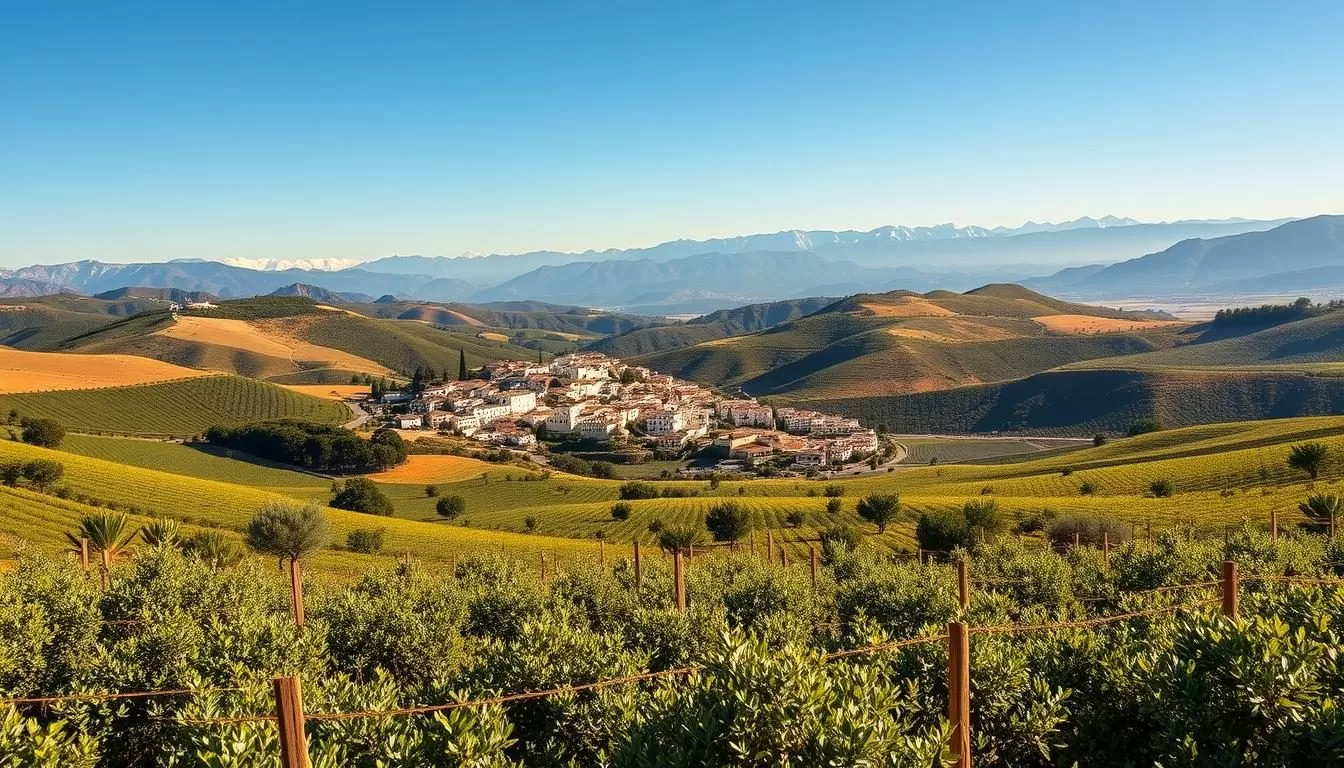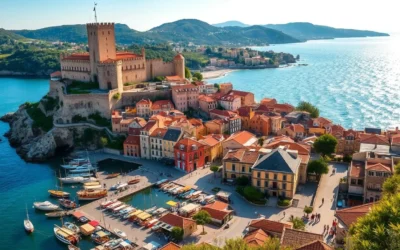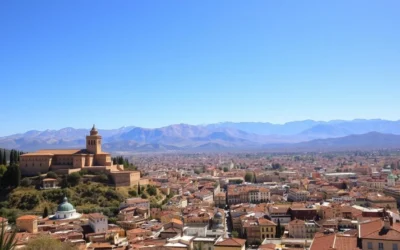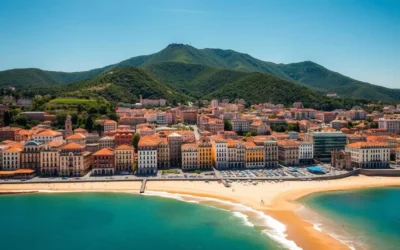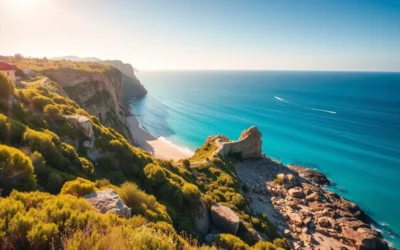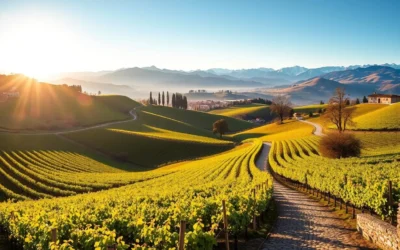✓ Accommodations✓ Flights✓ Rental Cars✓ Tours & Activities ✓ Tours & Activities
Imagine a region where culture, history, and nature blend seamlessly together, creating an unforgettable travel experience. Welcome to Andalucia, a sun-drenched destination in southern Spain that promises an incredible mix of cultural treasures, stunning landscapes, and unforgettable experiences.
This historic region is home to iconic cities like Seville, Cordoba, and Granada, each boasting a rich history that is visible in its architecture, cuisine, and traditions. As you explore this enchanting destination, you’ll discover top attractions and hidden gems that showcase Andalucia’s authentic charm.
Our comprehensive guide will take you through the top experiences Andalucia has to offer, from magnificent Moorish palaces to dramatic mountain trails and beautiful Mediterranean beaches. Get ready to immerse yourself in the unique blend of Islamic, Jewish, and Christian influences that make Andalucia so captivating.
Discovering the Magic of Andalucia
The region of Andalucia, with its stunning landscapes and rich cultural heritage, is an ideal destination for travelers seeking a unique experience. As you explore this southern Spanish region, you’ll discover a place where ancient traditions remain vibrant in everyday life.
Why Andalucia Should Be Your Next Destination
Andalucia captivates visitors with its perfect blend of stunning natural landscapes, rich cultural heritage, and warm Mediterranean climate, making it an ideal destination any time of year. The region’s strategic location between Europe and Africa has shaped its unique identity over thousands of years, creating a fascinating cultural tapestry. When planning your trip to Andalucia, you’ll discover a place where you can experience snow-capped mountains, pristine beaches, desert landscapes, and historic cities all in a single trip.
| Aspect | Description | Highlights |
|---|---|---|
| Cultural Heritage | Rich history and cultural influences | Alhambra, Mosque-Cathedral, Alcazar |
| Natural Landscapes | Diverse geography and climate | Snow-capped mountains, pristine beaches, desert landscapes |
| Cuisine | Delicious local ingredients and dishes | Tapas, seafood, local wines |
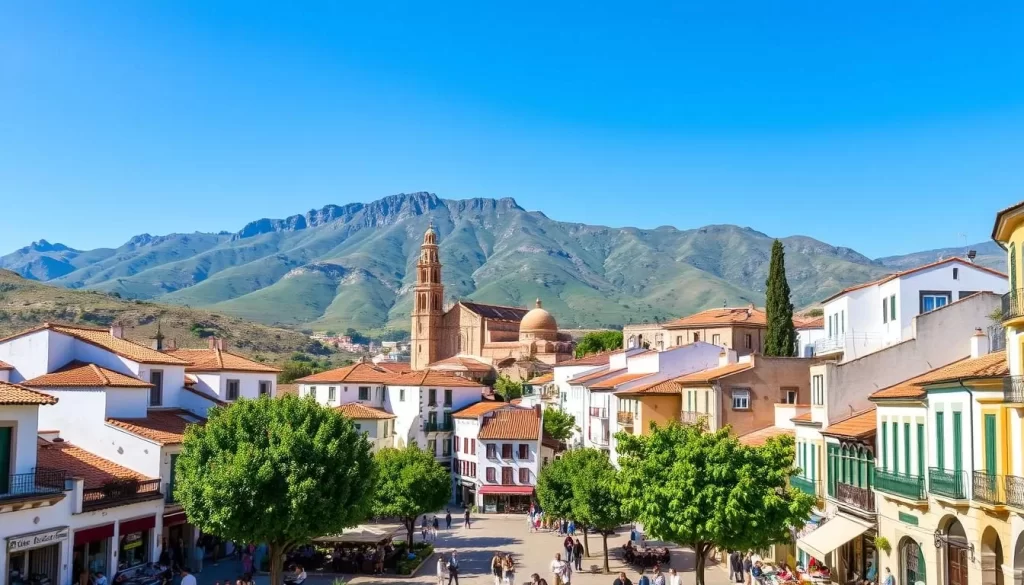
A Brief History of Southern Spain
The history of southern Spain is particularly marked by the 700-year Moorish occupation, which left an indelible architectural and cultural legacy that distinguishes Andalucia from other European destinations. This legacy is evident in the region’s monuments, such as the Alhambra in Granada and the Mosque-Cathedral in Cordoba, which showcase the harmonious coexistence of Moorish and Christian architecture.
Seville: The Heart of Andalucia
As you step into Seville, you’re immediately enveloped in the warmth and vibrancy of this captivating city. Located on the Guadalquivir River, Seville is a treasure trove of historical highlights, including the Alcazar Palace, the large cathedral, and the historic center of Santa Cruz.
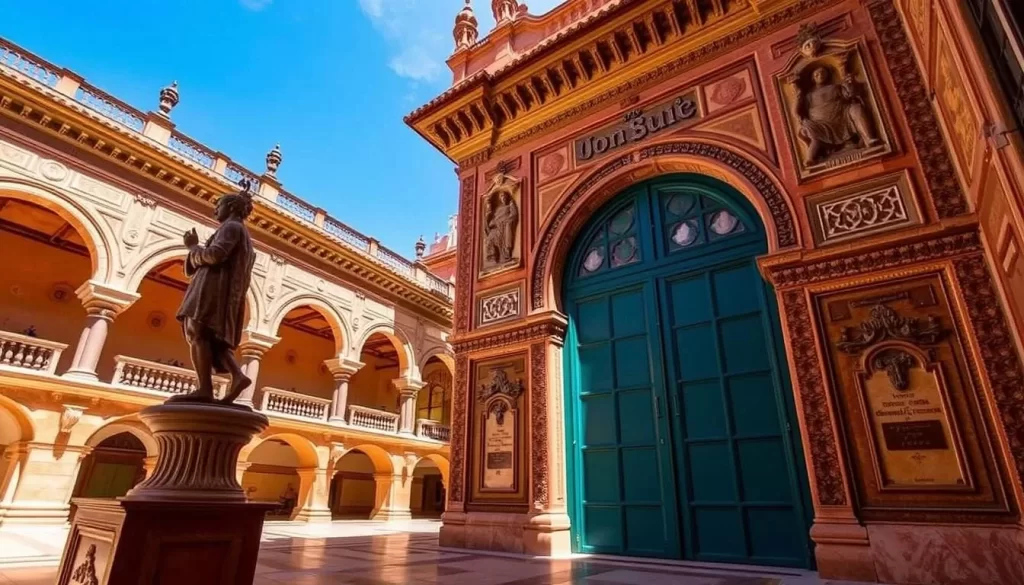
The Magnificent Real Alcazar Palace
The Real Alcazar Palace is a stunning example of Mudéjar architecture, showcasing intricate Islamic-style decorations, peaceful courtyards, and lush gardens. This royal residence has served as a filming location for Game of Thrones and continues to be used by the Spanish royal family today.
The palace’s unique blend of Christian and Moorish influences makes it a must-visit destination in Seville. As you explore the Alcazar, you’ll discover the rich history and cultural significance of this magnificent palace.
Seville Cathedral and La Giralda
Seville Cathedral, the largest Gothic cathedral in the world, is a UNESCO World Heritage site that houses Christopher Columbus’s tomb. Visitors can climb La Giralda tower for panoramic views of the old town center, taking in the city’s stunning architecture and historic landmarks.
Plaza de España and Maria Luisa Park
The magnificent Plaza de España, built for the 1929 Ibero-American Exposition, is a showcase of Renaissance and Moorish revival styles. The plaza’s sweeping semicircular building, decorative ceramic tile work, and picturesque canal make it a unique and unforgettable destination. You can rent small boats and enjoy the serene atmosphere of Maria Luisa Park, which surrounds the plaza.
As you explore Seville, you’ll discover the city’s vibrant culture, rich history, and stunning architecture. From the charming Santa Cruz quarter to the grand Plaza de España, Seville is a city that will captivate and inspire you.
Granada and the Spectacular Alhambra
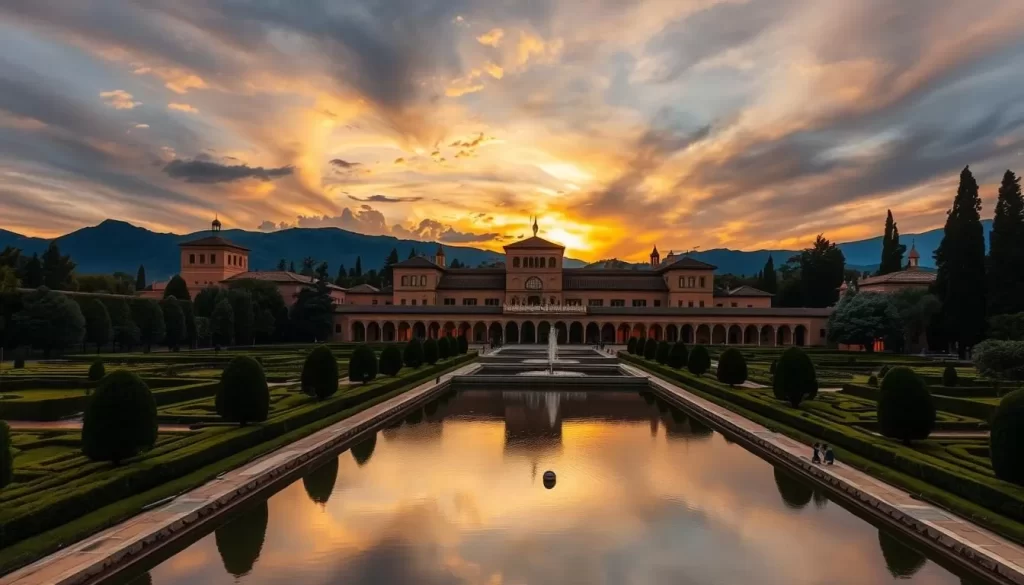
Book Now
As you step into Granada, the allure of the Alhambra beckons, promising an unforgettable journey through time. This medieval fortress and Moorish palace is Andalusia’s most famous landmark, and for good reason. Strategically located on a hill near Granada, the Alhambra offers stunning views across the city.
Exploring the Alhambra Palace Complex
The Alhambra is a collection of palaces, fortresses, and gardens that requires at least half a day to explore properly. Highlights include the intricate stucco work of the Nasrid Palaces, the massive Alcazaba castle, and the peaceful Generalife gardens. A guided tour is highly recommended to fully appreciate the historical significance and architectural details of this UNESCO World Heritage site.
The Albaicín and Sacromonte Districts
After visiting the Alhambra, explore the district of El Albaicín, a labyrinth of narrow winding streets and whitewashed houses. The San Nicolás viewpoint provides the most stunning views of the Alhambra. Nearby, the Sacromonte district is famous for its cave dwellings and authentic flamenco performances.
Sierra Nevada Mountains
The Sierra Nevada mountains provide a dramatic backdrop to Granada, offering the unique possibility of skiing in the winter morning and relaxing on a Mediterranean beach in the afternoon. This makes Granada a versatile destination for travelers.
Located in the heart of Andalusia, Granada is a city that seamlessly blends history, culture, and natural beauty, making it a must-visit location for any traveler.
Cordoba’s Historical Treasures
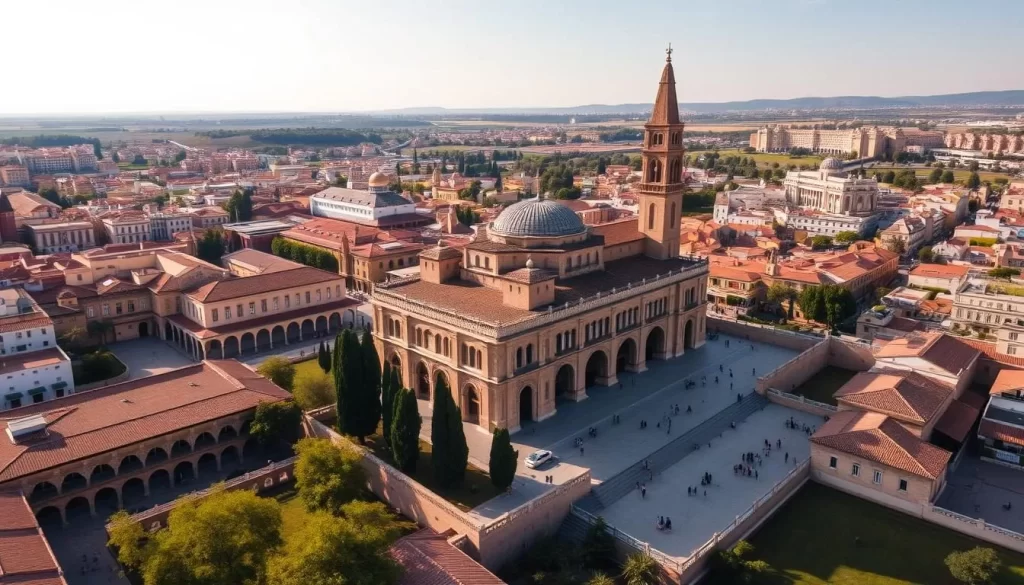
Learn More
With its layers of Roman, Islamic, Jewish, and Christian history, Cordoba offers a unique journey through time. As you explore this ancient city, you’ll discover a rich tapestry of historical landmarks that reflect its complex past.
The Mezquita Mosque-Cathedral
The Mezquita Mosque-Cathedral stands as one of the world’s most astonishing buildings, where a Catholic cathedral rises from the center of what was once the second-largest mosque in the Islamic world. This unique architectural fusion has survived for over 1,000 years, creating an atmosphere unlike any other religious building in Europe.
Inside the Mezquita, you’ll be mesmerized by the forest of 856 red and white striped arches and columns that seem to stretch infinitely.
The Jewish Quarter and Roman Bridge
The Jewish Quarter (Judería) surrounds the Mezquita and features a labyrinth of narrow streets, whitewashed buildings adorned with flowers, and hidden courtyards. The area comes alive during the “Festival of the Patios” each May when residents open their homes to visitors.
Don’t miss the Alcázar de los Reyes Cristianos, a medieval castle with beautiful gardens that served as home to Spanish monarchs and later as headquarters for the Spanish Inquisition.
The Roman Bridge, spanning the Guadalquivir River, has stood for nearly 2,000 years and provides excellent views of the city center, particularly at sunset when the Mezquita is beautifully illuminated.
Andalucia, Spain: Best Things to Do – Top Picks for Nature Lovers
For those who cherish the great outdoors, Andalucia presents a myriad of natural wonders that are sure to captivate and inspire. From breathtaking mountain trails to pristine beaches and protected wetlands, this region in southern Spain is a haven for nature enthusiasts.
El Caminito del Rey: Walking the King’s Path
El Caminito del Rey, or the King’s Path, is a thrilling hiking experience located near Malaga. After a thorough renovation in 2015, this former “world’s most dangerous walkway” now offers a safe yet exhilarating adventure. You’ll traverse narrow pathways clinging to vertical cliff faces 100 meters above the Guadalhorce River, enjoying incredible views of the dramatic gorge below.
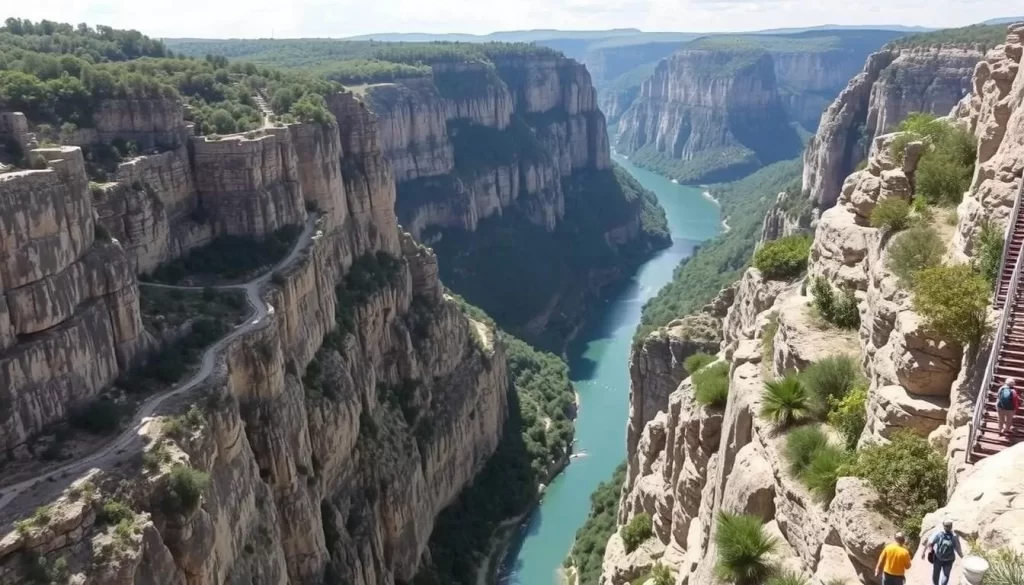
Doñana National Park
Located in the province of Huelva, Doñana National Park is one of Europe’s most important wetland reserves and a UNESCO World Heritage site. This ecological treasure boasts a diverse range of ecosystems, including marshlands, dunes, and Mediterranean forests, making it a paradise for ornithologists with over 300 species of birds. Visitors can explore this natural wonderland, spotting rare species like the Iberian lynx and Spanish imperial eagle.
Cabo de Gata-Nijar Natural Park
The coastal Cabo de Gata-Nijar Natural Park in Almería province offers a unique natural experience, with its volcanic landscapes, crystal-clear waters, and pristine beaches remaining relatively uncrowded even in summer. This park is a perfect location for those seeking tranquility and untouched natural beauty, making it one of the top recommendations for nature lovers visiting Andalucia.
Andalucia’s diverse natural landscapes offer some of the most spectacular outdoor experiences in Europe. Whether you’re hiking in the Sierra Nevada, exploring the wetlands of Doñana, or relaxing on the beaches of Cabo de Gata-Nijar, there’s something for every nature lover in this beautiful region.
The White Villages Route
Embark on a journey through Andalusia’s picturesque white villages, a testament to the region’s rich Moorish heritage. These charming towns, known as ‘Pueblos Blancos,’ are characterized by their whitewashed houses and narrow streets, offering a glimpse into traditional Spanish life.
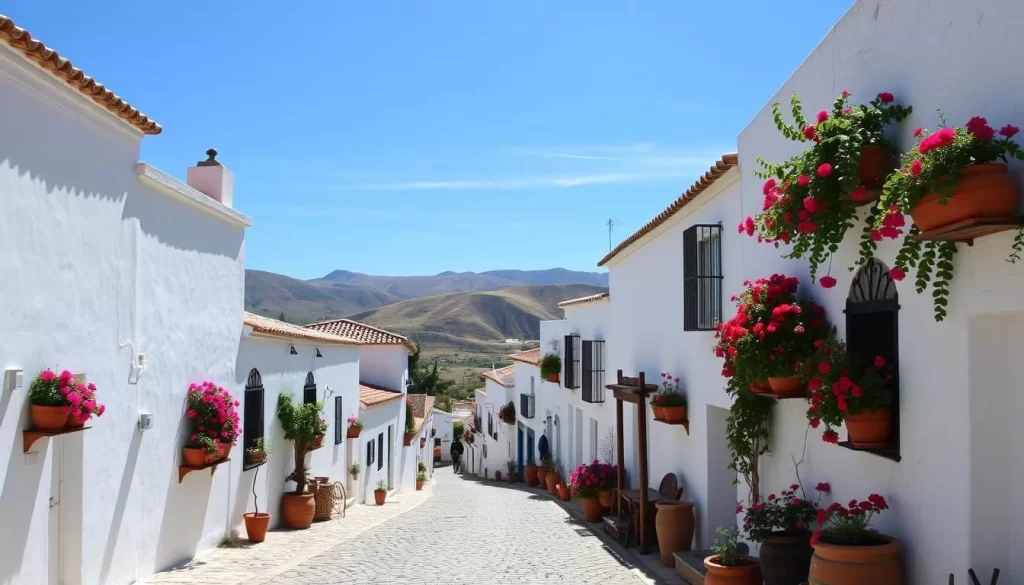
Ronda and Its Spectacular Gorge
Ronda is one of the most famous white towns in Andalusia, dramatically situated atop a deep gorge. The Puente Nuevo (New Bridge), an 18th-century masterpiece, spans the 100-meter drop, offering stunning views of the surrounding countryside. The historic center of Ronda is home to well-preserved Arab baths and Spain’s oldest bullring.
Arcos de la Frontera and Zahara de la Sierra
Arcos de la Frontera, perched on a limestone ridge, exemplifies the classic white village with its narrow, winding streets and medieval castle. Zahara de la Sierra, another notable white village, offers dramatic views of a turquoise reservoir from beneath its Moorish castle.
Setenil de las Bodegas: The Cave Village
Setenil de las Bodegas is unique among the white villages, with many of its houses built directly into overhanging rock faces. This creates streets where massive boulders form the roofs of buildings and cafes, offering a one-of-a-kind experience.
Coastal Gems of Andalucia
With over 800 kilometers of coastline, Andalucia offers a rich tapestry of coastal experiences. You can explore vibrant resort towns, relax on secluded beaches, or immerse yourself in the rich history and culture of its coastal cities.
Málaga: Culture and Beaches
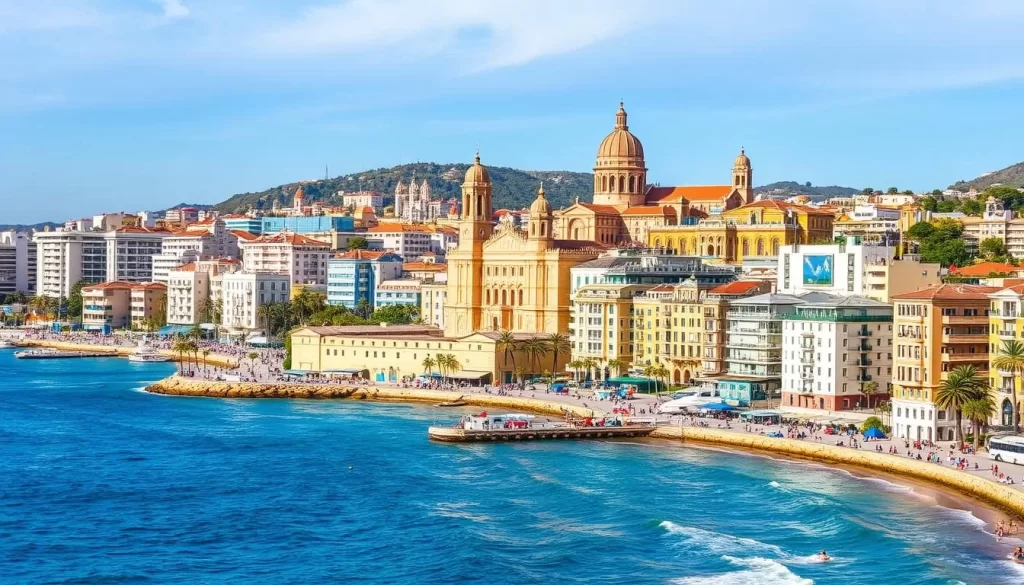
Málaga, the capital of Costa del Sol, is a dynamic city that combines gorgeous beaches with a rich history and contemporary art. You can visit the Picasso Museum, stroll through the charming old town center, and enjoy the city’s excellent shopping districts.
Cádiz: Europe’s Oldest City
Cádiz, considered Europe’s oldest continuously inhabited city, offers a unique blend of history, culture, and beautiful beaches. You can explore its atmospheric old town, visit the magnificent cathedral, and enjoy the city’s stunning beaches.
Marbella and the Costa del Sol
Marbella represents the glamorous face of the Costa del Sol, with its exclusive beach clubs, luxury marina, and designer shopping opportunities. You can also explore its charming old town with flower-filled plazas and enjoy the lively atmosphere.
Andalucia’s coastline is not just about the major cities; it’s also home to numerous hidden gems like Tarifa, known for its windsurfing opportunities, and Nerja, with its famous “Balcón de Europa” viewpoint and prehistoric caves. The Costa de la Luz on the Atlantic coast offers wider, more natural beaches perfect for a relaxed beach experience.
Unique Experiences in Andalucia
Beyond its stunning landscapes and historical landmarks, Andalucia offers a plethora of unique cultural experiences. You can immerse yourself in the region’s soul and traditions, creating memories that will last long after your trip ends.
Flamenco Shows and Cultural Performances
Attending an authentic flamenco performance is an essential Andalucian experience. Cities like Seville, Granada, and Jerez offer venues ranging from formal theaters to intimate tablaos where you can witness this passionate art form that combines guitar music, singing, hand clapping, and expressive dance.

Sherry Tasting in Jerez de la Frontera
Jerez de la Frontera invites you to discover the fascinating world of sherry production. You can take a tour of historic bodegas (wine cellars) dating back centuries, learn about the solera aging system, and sample different varieties from dry fino to sweet Pedro Ximénez.
The Caves of Nerja
The impressive Caves of Nerja, located on the Costa del Sol, are one of the natural wonders of Andalusia. These caves extend for nearly 5 kilometers and contain one of the world’s largest stalagmites, prehistoric cave paintings, and a concert hall where musical performances are held in summer.
Hidden Gems Off the Tourist Trail
Venture off the beaten path to discover Andalucia’s most treasured secrets. While many flock to the region’s famous cities, there are numerous lesser-known destinations that offer a more authentic experience.
Antequera and El Torcal National Park
Located 47 kilometers north of Málaga, Antequera is a charming town with a rich history. Its Moorish castle, Alcazaba, towers above the town, offering breathtaking views. The nearby El Torcal National Park is a marvel of nature, featuring unique limestone formations shaped by millions of years of erosion.
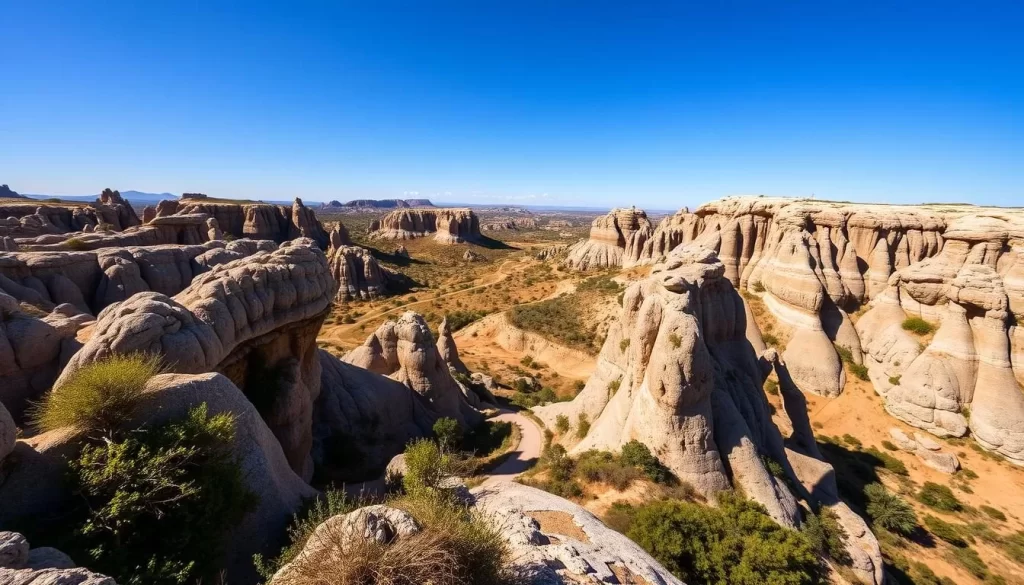
Baeza and Úbeda: Renaissance Treasures
The twin towns of Baeza and Úbeda in Jaén province are renowned for their Renaissance architecture. These 16th-century towns are filled with beautifully preserved palaces, churches, and plazas, earning them a spot on the UNESCO World Heritage List.
| Town | Notable Features |
|---|---|
| Baeza | Renaissance palaces, historic center |
| Úbeda | 16th-century architecture, UNESCO heritage |
The Tabernas Desert
Europe’s only true desert, the Tabernas Desert in Almería province, is a dramatic landscape of eroded badlands. This unique location has been used as the backdrop for numerous Western films, with several former movie sets now open for tours.
By exploring these hidden gems, you’ll experience the authentic charm of Andalucia, away from the crowds. Whether it’s the historical significance of Antequera, the Renaissance treasures of Baeza and Úbeda, or the cinematic landscapes of the Tabernas Desert, there’s much to discover in this captivating region.
Best Time to Visit Andalucia
As you plan your trip to Andalucia, understanding the region’s seasonal rhythms is essential to making the most of your journey. Andalucia enjoys a Mediterranean climate, characterized by significant temperature variations between summer and winter.
Seasonal Highlights and Festivals
The region’s festival calendar is filled with compelling reasons to visit at specific times. For instance, the Holy Week (Semana Santa) processions in spring are particularly spectacular in Seville and Malaga. The famous horse fair in Jerez (Feria del Caballo) in May is another highlight.
- Spring (April to June) offers ideal conditions for exploring Andalucia, with comfortable temperatures and wildflowers in bloom.
- Fall (September to October) provides another excellent window, with the summer heat subsiding and the Mediterranean still warm enough for swimming.
- Summer brings intense heat to inland cities, but it’s high season for coastal areas and a time when many small villages come alive with local festivals.
- Winter offers mild temperatures, reduced crowds, and the unique opportunity to combine skiing in the Sierra Nevada mountains with exploring historic cities.
Weather Considerations
The warmer months, April, May, June, September, and October, are often considered the best times to visit Andalucia, with pleasant temperatures between 20°C and 25°C. In contrast, summer months (July and August) can see temperatures reach 40°C, especially in inland areas like Seville or Cordoba. If you visit during this time, staying near the coast can help you better withstand the heat.
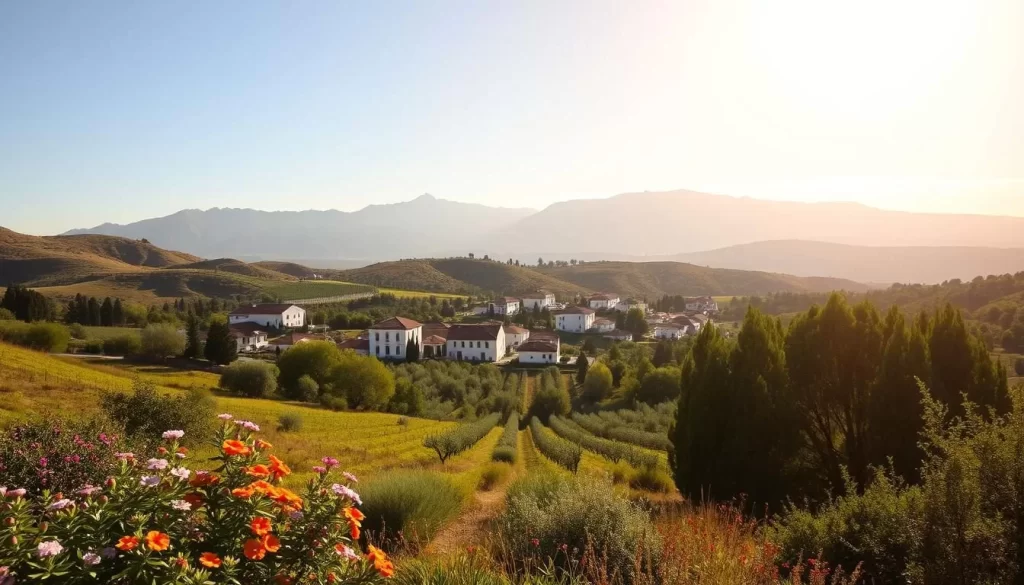
Conclusion: Planning Your Perfect Andalucian Adventure
As you plan your trip to Andalucia, you’ll want to balance must-see attractions with time to soak in the region’s unique atmosphere. Consider allocating 7-10 days to explore the region’s highlights.
Structure your trip around the four major cities: Seville, Granada, Cordoba, and Malaga. Spend at least two full days in Seville, exploring the Real Alcazar Palace and Seville Cathedral. Allocate two days for Granada, including a visit to the Alhambra.
Cordoba deserves at least a day to discover its historical treasures, particularly the Mezquita Mosque-Cathedral. Transportation options are excellent, with high-speed trains connecting major cities. However, renting a car gives you the freedom to explore the White Villages, coastal areas, and natural parks like El Caminito del Rey.
Build flexibility into your itinerary to allow for spontaneous discoveries and relaxation. Consider your travel style: history buffs might spend more time in Seville, Granada, and Cordoba, while beach lovers might base themselves on the Costa del Sol. Book popular attractions in advance to avoid disappointment.
Embracing the Andalucian pace of life, with time for afternoon siestas and late dinners, will enhance your experience. By doing so, you’ll truly immerse yourself in the region’s relaxed and sensual approach to living.
The above is subject to change.
Check back often to TRAVEL.COM for the latest travel tips and deals.
